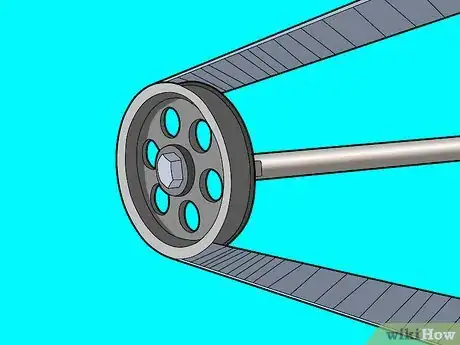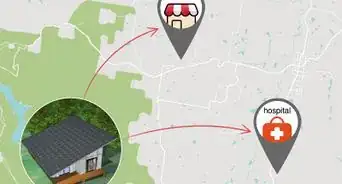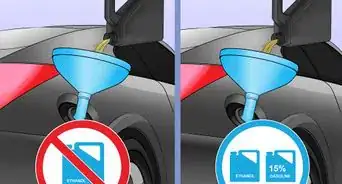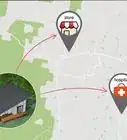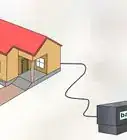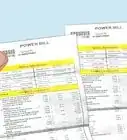wikiHow is a “wiki,” similar to Wikipedia, which means that many of our articles are co-written by multiple authors. To create this article, 19 people, some anonymous, worked to edit and improve it over time.
This article has been viewed 334,669 times.
Learn more...
Our society has become accustomed to using equipment and appliances that run on AC power provided by our local power provider. In most cases this is ideal, but in some cases, AC power is not available. AC power may be unavailable because the distribution grid of the power provider is not operating, or because no distribution grid exists in the area, as would be the case on camping or hiking excursions. AC power can be made available in areas that cannot get AC power from a distribution grid by using a gasoline powered generator to make AC power. Gasoline powered generators also may be used to recharge the 12 volt DC batteries of portable equipment. The 12 volt DC batteries allow equipment and appliances to be used in the absence of a power grid, but have limited run time available. Use these tips to learn how to build a generator.
Steps
Obtain the Main Power Pieces
-
1Acquire an engine. The required engine size is dependent on the amount of power that the generator will need to supply. A good rule of thumb for a useful, compact generator is to choose an engine in the range of 5 to 10 horsepower. Note that most engines rate their horsepower at a speed of 3,600 rotations per minute (RPM). These motors are about the size of lawn mower engines, and are typically available at lawn equipment stores, industrial supply shops or power equipment outlets.[1]
-
2Choose an AC generator head. This head will use an internal magnet to create electricity when the shaft mounted magnet is spun by the external engine. For most applications, output levels of 2,500 to 5,000 watts is suitable. In sizing the head, use the specification of the manufacturer to determine the engine size needed to drive that head. As a rough estimate, a generator can produce about 900 (749 watts per horsepower is the actual conversion) watts per input horsepower. Heads are available through industrial supply outlets and industrial equipment catalogs.Advertisement
-
3Select a 12 volt DC alternator. This alternator will generate 12 volts DC when the shaft is driven by the external engine. The alternator chosen must have a built-in voltage regulator. A 500 watt alternator is typically sufficient, and would require about another horsepower from the chosen engine. Alternators are widely available at auto parts suppliers.[2]
Connect the Main Power Pieces
-
1Fabricate a mounting plate.[3] This mounting plate can be made of any sturdy material that can withstand the vibration of the gasoline engine. The 3 main power pieces (engine, generator head and alternator) must be mounted so that their shafts are parallel and the shaft attachment areas for drive pulleys are in the same plane. Mounting holes and mounting hole patterns must be derived from the manufacturer data for each of the 3 major power pieces.
-
2Mount the pulleys. A pulley must be mounted to the engine shaft to belt drive the pulleys that will come already installed on the generator head and the alternator. This pulley size must be chosen so that when the engine is rotating at the nominal running speed given by the manufacturer, the belts will scale this up or down to the pulleys of the generator head and the alternator. Choose the scaling so that the generator head and the alternator are running at the rated speed indicated on the manufacturer data sheet. In most typical generators, this will result in an engine pulley of 5 to 10 inches (125 to 250 mm). Pulleys are available at industrial supply stores and through equipment supplier catalogs.
-
3Run the belt or belts. The design of the generator may need different pulleys on the engine to apply proper shaft speed to the generator head and the alternator, or this may be workable with 1 engine pulley and 1 belt. Run the belt over the pulleys and make sure that they are taught. Slotting the mounting holes of the engine will provide good adjustment to achieve this. A V belt is preferable to a standard belt as it will have less tendency to slip. Belts may be acquired from the outlet that supplied the pulleys.
-
4Mount the gasoline tank to the mounting plate.
-
5Reconnect the gasoline supply. Fill the gasoline tank and place the fuel feed lines to the engine.
Community Q&A
-
QuestionWhat are the magnets for and how do I use them?
 Community AnswerWhen a conductive metal passes through the magnetic field you create with the magnets, a current is produced in the metal that can be used to power appliances.
Community AnswerWhen a conductive metal passes through the magnetic field you create with the magnets, a current is produced in the metal that can be used to power appliances. -
QuestionI want to make an object of a simple AC power generator. How can I do this?
 kazuza9Community AnswerYour best bet is using a lawn mower engine and an alternator to charge a battery to power an inverter.
kazuza9Community AnswerYour best bet is using a lawn mower engine and an alternator to charge a battery to power an inverter. -
QuestionDo alternators rotate either way?
 Community AnswerTypically, alternators only rotate one way so be sure to check that before installing it.
Community AnswerTypically, alternators only rotate one way so be sure to check that before installing it.
Things You'll Need
- Gasoline powered engine
- Gasoline tank
- AC generator head
- 12 volt DC alternator
- Pulleys
- Drive belts
- Direct drive shaft couplers (pulleys)
- wires
- magnets
- bulbs
References
About This Article
To build a generator, you’ll need a mounting plate made out of any sturdy material with holes drilled in it to attach the main power pieces. You’ll also need a small 5 horsepower engine, such as a lawnmower engine, to drive the pulleys that are mounted on top. Then, you’ll want to install an AC generator head to turn the power from the moving belts on the pulleys into usable electricity. Finally, you’ll attach a gasoline tank to the plate and filled with gas before attaching its feed lines to the engine. For tips on how to find the proper engine for your generator, read on!





